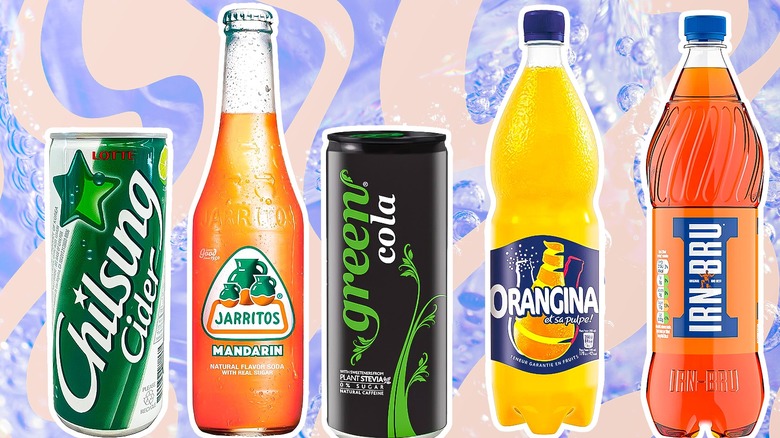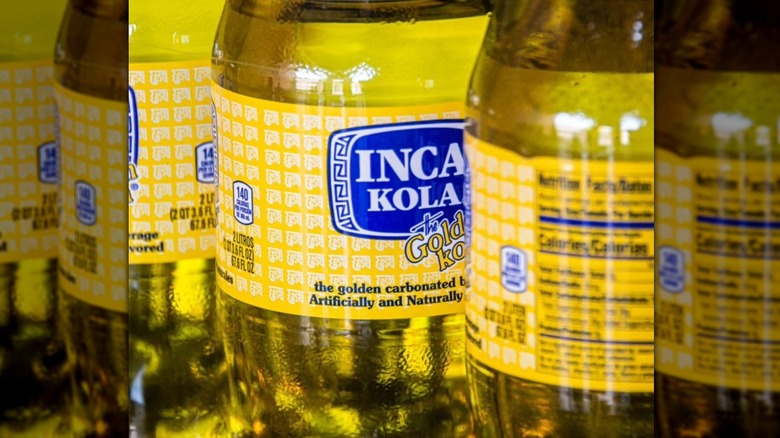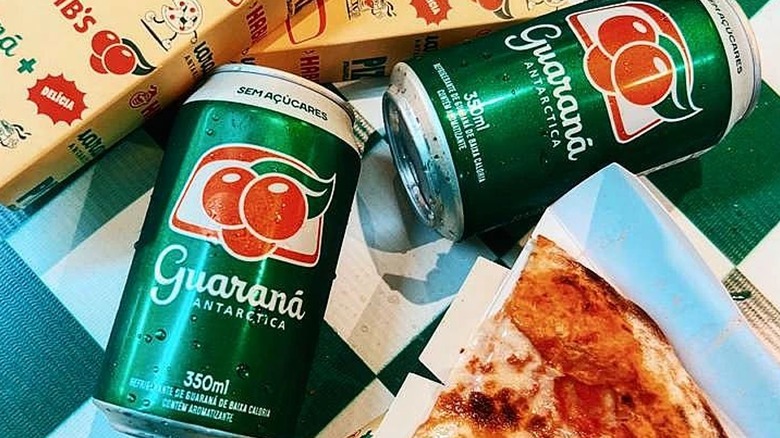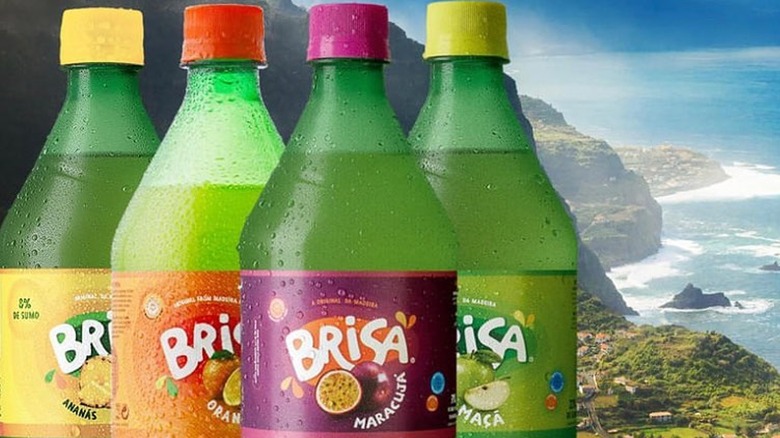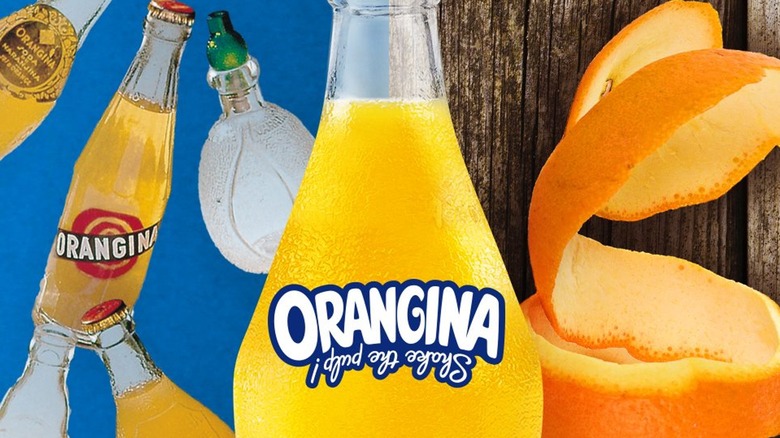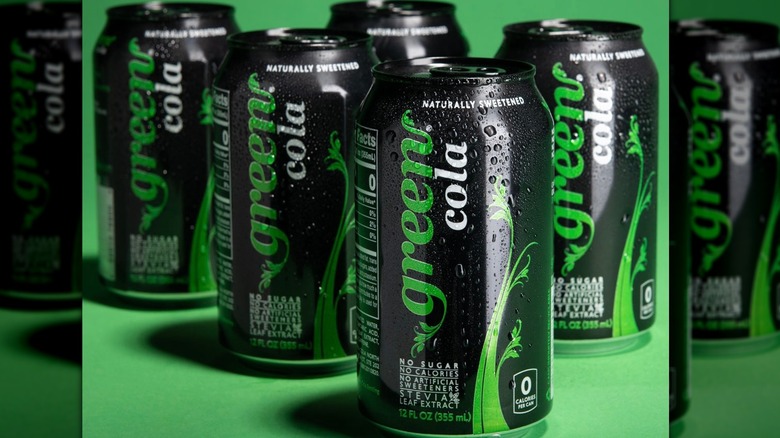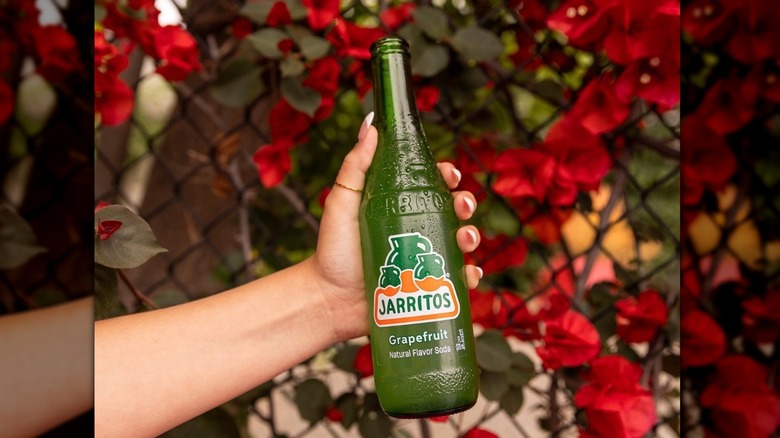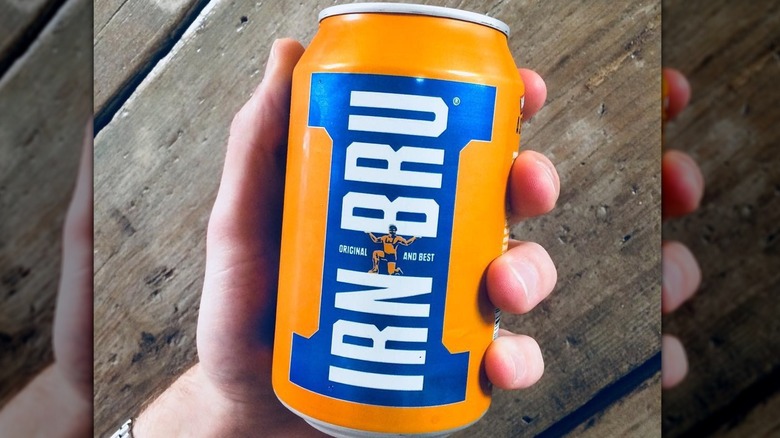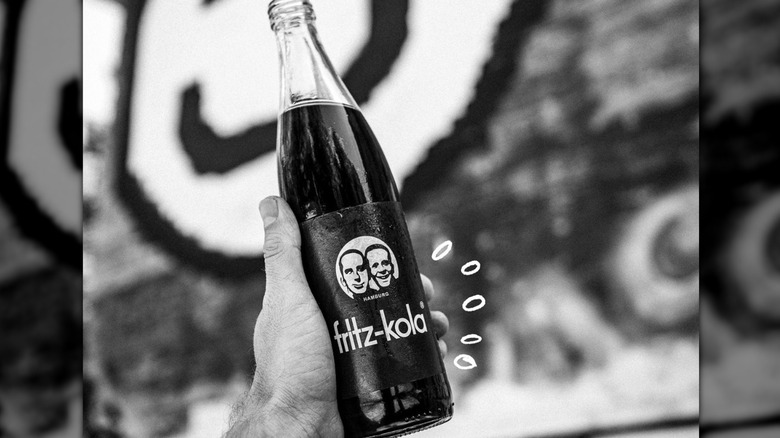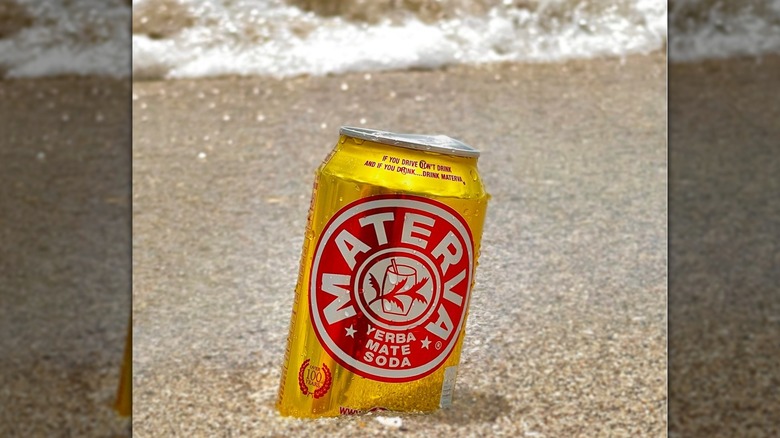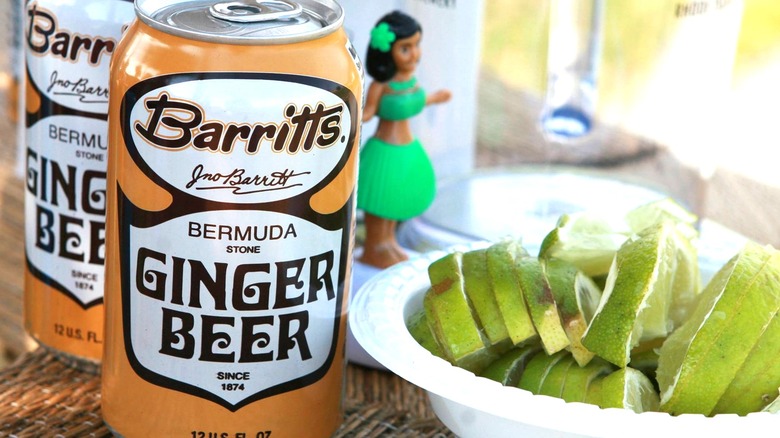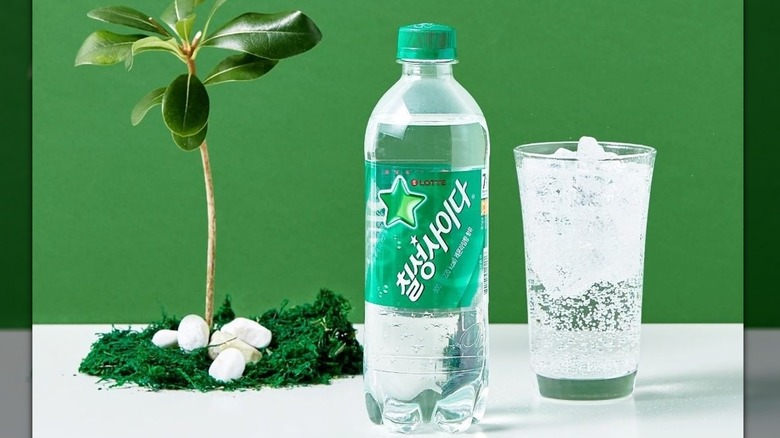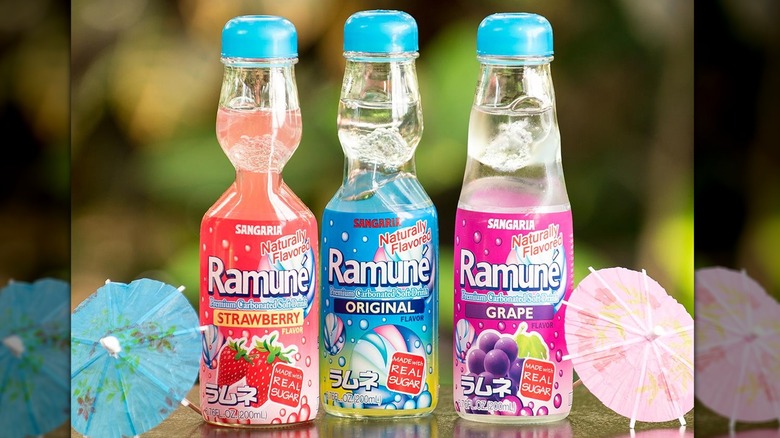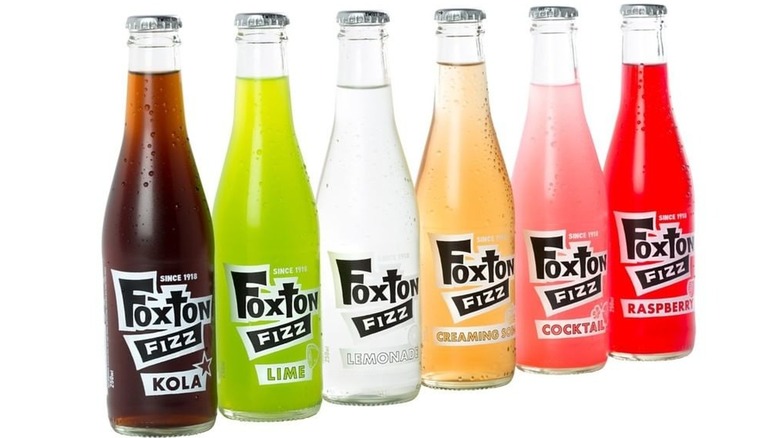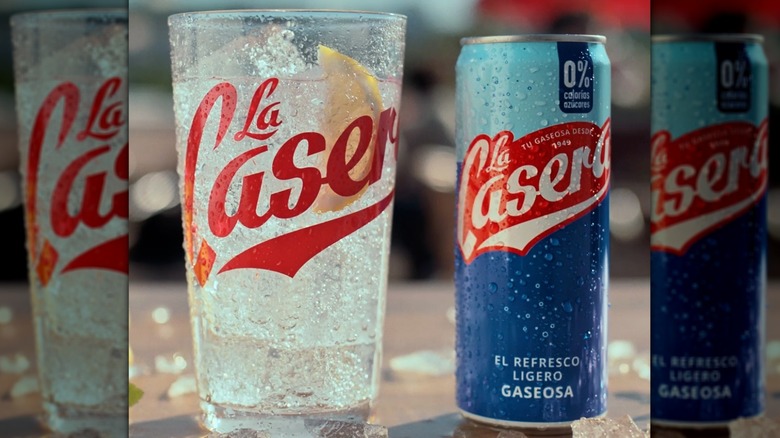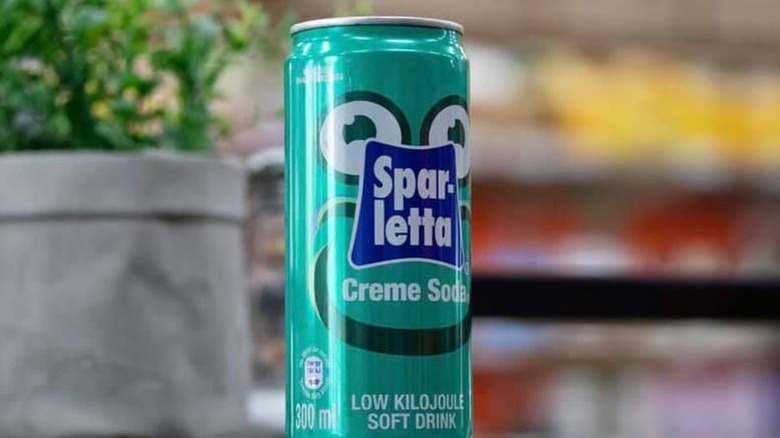15 Popular Soda Brands From Around The World
No matter where you are in the world, there's something special about popping open an ice-cold soda. Although the United States has a staggering number of its own soft drink brands, there are plenty of specialty drinks that hail from other countries and regions across the globe. Some of them have transcended borders and can now be found far beyond their places of origin, while others remain decidedly local treats that you'll have to travel to taste.
It's no secret that Coca-Cola is the most popular soda brand around the world; you'll find it in almost every corner of the map (although some people swear that a Coke tastes different from country to country). But if you're hoping for a glimpse into other cultures and culinary tastes, consider seeking out local soft drinks, many of which feature unique ingredients and regional flavors.
These fizzy, sweet concoctions are often important cultural symbols, and many of them even have historical significance. Some stand out for their interesting origin stories, while others are intriguingly obscure or just plain delicious.
Inca Kola
Although it was originally created by a British immigrant, this bright yellow soda is even more popular than Coca-Cola in Peru — which is no small feat. You'll find Inca Kola everywhere, from supermarket shelves to street food stalls, inevitably catching your eye with its vivid neon hue. The name and logo invoke Peru's Indigenous history, which is just one of the many factors that have helped it to become so strongly connected to the country's identity.
The flavor of Inca Kola is hard to describe; it's intensely sweet and sometimes likened to bubblegum. But similarly to Coke, it doesn't taste exactly like anything else — it just tastes like Inca Kola, and it's one of those things that most people either love or hate at first sip. That said, it's nothing short of beloved in Peru, where it's still owned by the original corporation that created it (elsewhere in the world, the brand has been acquired by Coca-Cola).
Guaraná Antarctica
This drink takes its name from the guaraná plant, which is native to Brazil's Amazonian regions. The plant produces fruits that contain small seeds, which have a naturally high caffeine content. This convenient feature has made guaraná extract a popular addition to energy drinks around the world — but in Brazil, it's most commonly found as the key ingredient in guaraná soda, which is somewhat of a national symbol.
By far, the most iconic brand of guaraná soda is Guaraná Antarctica, with its highly recognizable red-and-green packaging. It has a subtle fruit flavor and slightly less sugar than Coke and similar soft drinks. The brand is widely associated with Brazilian culture and heritage, thanks in large part to 20th-century marketing campaigns that aimed to position it that way. Today, it's also produced in Argentina, Bolivia, Portugal, and Japan and is available across the world – so you can probably try it without hopping on a flight.
Brisa
Brisa has its roots on the Portuguese island of Madeira, which is actually closer to both Morocco and the Canary Islands than it is to mainland Portugal. Due to its location and climate, the island has developed its own culture and cuisine — and Brisa is a modern symbol of both. The company was born in 1970, at which point it was the world's first soft drink to be made with pure passion fruit juice.
The original maracujá (passion fruit) flavor remains the most common across the island. You can also find a pineapple version, as well as sugar-free apple, orange, and passion fruit varieties. The classic Brisa Maracujá contains only seven ingredients, 9% juice, and no artificial coloring, making it a purer — but still sugary — alternative to more mainstream options.
If you buy Brisa in a bottle, you can actually see the passion fruit pulp collecting at the bottom. Give it a good (but gentle!) shake before opening it so you get some real fruit in every sip. Its sweet and slightly sour flavor pairs perfectly with other must-try Madeiran foods like milho frito and bolo do caco.
Orangina
You might know Orangina for its distinctive bulbous bottle — designed to mimic the shape of an orange, naturally — or its iconic vintage ads, which depict a sun umbrella made from a cartoon swirl of orange peel. Then again, maybe not; although it can certainly be found in the U.S., this is one of the more universally popular brands across the world, found heavily in France and other European countries.
Although today it's somewhat of a French icon, Orangina was actually developed in Algeria by a Valencian pharmacist. He called it Naranjina (a play on the Spanish word for "orange"), but the first bottles sold in France were rebranded as Orangina. Today, you can also find Naranjina, made with Valencian oranges, in Spain.
Orangina is fizzy and fresh, owing its strong citrus flavor to a blend of real orange, lemon, mandarin, and grapefruit juices, plus 2% orange pulp. The original variety is by far the most common, but you might also come across red-orange, light, and tropical flavors, the latter of which adds mango, pineapple, passion fruit, and apple juices into the mix.
Green Cola
You might be disappointed to learn that Green Cola is not, in fact, green — at least not in terms of color. In this case, "green" presumably has more to do with its focus on natural ingredients. Although it's only been around since 2012, the soda has already become ubiquitous in its home country of Greece. You'll find it on the menu at many restaurants in Athens and across the islands, as well as several other countries in Europe.
The main differentiators of Green Cola are that it's sweetened with stevia rather than sugar, and it gets its caffeine from green coffee beans (yet another potential meaning behind the name). It has a similar flavor to that of Coca-Cola, although the alternative sweetener lends it a unique taste. The original flavor has no sugar, aspartame, or preservatives.
Since 2012, the brand has also launched lemonade, orangeade, lemon-lime, and sour cherry flavors, as well as a caffeine-free version. It's even branched out into soda water, tonic, and canned mocktails. But the classic cola flavor is still the most popular and easy to find.
Jarritos
Many Americans are fondly familiar with Jarritos. These jewel-toned fruit sodas come in textured glass bottles with a simple orange and green logo. The brand was created in 1950 by a Mexican chemist known as El Güero and started being sold in the U.S. in 1988. A few decades later, it's widely available across North America and in dozens of countries worldwide.
The original Jarritos flavor was, interestingly enough, coffee. This was followed by tamarind, which you can still find today, and later mandarin, lime, guava, pineapple, passion fruit, strawberry, grapefruit, watermelon, mango, fruit punch, jamaica (hibiscus), and Mexican cola. In the beginning, the different flavors weren't even labeled; their bright — and in some cases, practically neon — colors were enough to distinguish them on the shelves.
Few of the world's popular soda brands are this classic, but Jarritos hasn't rested on its laurels. It does an exceptionally good job of keeping up with the times. The company has an astounding social media presence. It's also launched collaborations with apparel brands like Nike and Findlay Hats and was an official partner of the 2023 X Games.
In other words, Jarritos has figured out how to make soda incredibly cool. And if you're looking for a bit of lightly conspiratorial brand trivia to bring up at parties, the company purportedly possesses secret mandarin groves somewhere on the Yucatán Peninsula (it's not clear why exactly they're secret, except maybe to generate intrigue).
Irn-Bru
One might assume that the national drink of Scotland is whisky, but it turns out that there's another beloved beverage strongly associated with the country's identity. Irn-Bru is a shockingly bright orange soda with a flavor that's hard to pin down. Although it's often described as bubblegum or tutti frutti, no one can seem to agree — a controversy that the company often pokes fun at in cheeky ads ending with the slogan "Let's just agree it tastes bangin'."
The drink was created in 1901 and was originally called Iron Brew — which is how "Irn-Bru" is pronounced, incidentally — in reference to the fact that it contained a small amount of iron. Later on, the spelling of the name had to be changed because the soda isn't technically a "brew." Apparently, it still contains iron, along with a bit of caffeine, quinine, plenty of sugar, a couple of artificial sweeteners, and coloring agents.
The artificial sweeteners were added in 2018 in response to the UK's "sugar tax" — and many loyal Irn-Bru devotees were not happy. The company later released a limited-edition version called Irn-Bru 1901, made with the original secret recipe. According to many reports, it was so popular that they decided to bring it back on a permanent basis.
Fritz-Kola
There are plenty of alternative colas on the market, but Fritz-Kola is a quintessentially German take on this classic flavor. Made with natural ingredients, including kola nut and green coffee bean extracts, it's dramatically dark in color — almost black, in fact — and contains about 82 milligrams of caffeine per bottle (25 milligrams per 100 milliliters). For reference, the same amount of Coke has just 33 milligrams of caffeine.
This elevated caffeine content was actually among the brand's founding principles. super-caffeinated Fritz-Kola was invented in 2002 in a dorm room by two college students named Lorenz Hampl and Mirco Wiegert, who wanted to create something better than the average mass-produced soda brands from across the world. The company has kept the same general aesthetic since its launch: glass bottles with minimalistic black-and-white labels depicting the two founders' faces.
These days, Fritz-Kola is available in sugar-free and superzero (also sugarless, but with a slightly different formula) versions. There's also the fruity Fritz-Limo orangeade and lemonade and the organic Fritz-Spritz, which comes in apple and rhubarb flavors.
Materva
If you've ever been to Miami, chances are you've seen Materva somewhere. Although this mate-based soda has its roots in Cuba, today, it's produced right in the Magic City. Its shiny red-and-yellow cans are nothing short of iconic, symbolizing not only their country of origin but also the culture of the Cuban diaspora in South Florida.
Materva may taste more like sugar than actual yerba mate, but it does get its caffeine from natural mate extract. It's one of several Cuban sodas produced by the Cawy Bottling Company, which was originally established in Cuba just before the revolution of the 1950s. Its founders emigrated to Miami, where they reopened their company and started selling Materva in the 1960s (along with other classic Cuban sodas like Cawy Lemon Lime and Jupiña).
In 2010, Remezcla reported that then-president Barack Obama ordered a can of Materva during a visit to El Mago de las Fritas, a legendary Miami sandwich shop. Unfortunately, we'll probably never know what he thought of it.
Barritt's Ginger Beer
The difference between ginger ale and ginger beer may not be common knowledge, but one sip of this classic Caribbean soda is explanation enough. Barritt's Ginger Beer is both spicy and sweet, made with natural ginger to ensure it tastes like the real thing.
There are two classic versions of Barritt's: canned and bottled. And while the packaging may not seem all that important, in this case, it actually makes a difference. The canned stuff is sweetened with high-fructose corn syrup, while the glass bottles contain only pure cane sugar. Then, of course, there's the sugar-free iteration, recognizable for its light blue label, which uses a combination of sucralose and acesulfame potassium (also known as Ace K).
Barritt's is a classic soft drink across the Caribbean, although these days, it's pretty popular stateside, too. The company is still based in its home country of Bermuda, but it's also produced in the U.S. You're likely to find it at craft cocktail bars, where it plays a starring role in drinks like the Moscow Mule (with vodka) and the Dark and Stormy (with dark rum).
Chilsung Cider
If there's one soft drink that represents South Korea, it's Chilsung Cider. Don't let the name fool you — it's neither alcoholic nor apple-flavored, but rather a lemon-lime soda similar to Sprite. According to some sources, the word "Chilsung" is a phonetic version of a Korean term referring to the seven stars of the Big Dipper, which may explain the star motif on its label.
Much of the brand's cultural importance comes from the fact that it was created and is still produced in South Korea rather than being imported from Japan or other countries. It carries a certain sense of nostalgia for the older generation of South Koreans who grew up drinking it. That said, it's also targeted younger consumers with ads and limited-edition labels featuring the members of the K-pop group BTS to promote its peach and green tangerine flavors.
Chilsung Cider is caffeine-free and contains no artificial coloring, so the drink itself is completely clear. It was traditionally sold in green plastic bottles, but in 2019, the company switched to clear plastic because of a new environmental regulation banning the use of colored plastic packaging.
Ramune
Unlike the other drinks on this list, ramune is a Japanese soda that isn't one specific brand but rather a variety that's marketed by a few different companies, including Hata Kosen and Sangaria. Its defining feature isn't actually the soda itself, which is clear and most commonly lemon-lime flavored. Instead, it's known for its iconic packaging: a glass bottle sealed with a marble, designed to keep the contents fizzy.
This method of sealing carbonated drinks, which is known as a Codd-neck bottle, isn't actually unique to ramune; it was commonly used in many countries before modern bottle caps were developed. But today, it's pretty much only used for Japanese ramune and Indian banta. To open it, you have to remove a small plastic device from the cap and use it to release the marble, which is then caught in the pinched part of the bottleneck so it doesn't fall into the drink.
It might be the distinctive shape of the bottles, the interactive aspect of opening them, or the novelty of watching a marble roll around above your soda, but ramune has become incredibly popular both within and outside of Japan. You can find it in the U.S. at specialty stores and even larger retailers like World Market.
Foxton Fizz
Sold in glass bottles with retro-style labels, Foxton Fizz is among the oldest soft drink brands in New Zealand. It was founded in 1918 in the small coastal town of Foxton on the North Island and is now available all across the country. It was traditionally delivered in glass bottles packed in wooden crates, which were also used to return the empty bottles to the factory to be refilled and resold (reminiscent of the way milk delivery used to work).
Foxton Fizz was family-owned until 2006 when it was bought by a group of 10 friends to keep the company from going under. The company relocated to Auckland and modernized the bottling and delivery process (sadly, saying goodbye to the wooden crates and the classic method of recycling bottles).
The brand has only grown since then, offering its signature line of lime, lemonade, kola, creaming soda, raspberry, and cocktail flavors in classic glass bottles. You can even buy a replica of the bright green 1960s delivery crate from the company's website for an extra dose of nostalgia.
La Casera
Many visitors to Spain are surprised to find out that sangria, supposedly the national beverage, is actually far less common than tinto de verano: red wine mixed with gaseosa (soda). There's a solid chance that the soda in question is La Casera — and even if it's not, it'll probably be referred to that way. This brand is so ubiquitous in Spain that casera has become a generic term for soda in general, especially when it's being used as a mixer.
Its name literally means "homemade" in Spanish, but La Casera is far from an artisanal operation today. The brand's offerings now include not only the classic unflavored lemon, mint, apple, orange, and cola sodas but also premixed tinto de verano and aperitifs made with cider, vermouth, and verdejo wine. According to the company's website, it's been working on lowering the sugar content of its products for years, and 98% of them are now low- or zero-calorie.
Sparletta
Invented in the early 1950s by a Coca-Cola factory owner, Sparletta is a South African brand through and through. The popular soda brand's most famous flavor is creme soda — similar to American cream soda but, in this case, bright green. Other flavors include sparberry, pine nut, cherry plum, apple rush, and iron brew (not to be confused with the Scottish Irn-Bru). Each one has its signature color: sparberry is red, pine nut is yellow, iron brew is dark brown, and so on.
Sparletta is primarily available across southern Africa, although it's also exported to a few other countries. In Mozambique, the sparberry flavor is part of a classic mixed drink called an R&R, which involves mixing rum with red soda. Creme soda is also a popular mixer in South Africa. According to popular belief, it can even help treat the effects of having too many cocktails the night before. It's sometimes called "the green ambulance" in reference to its use as a hangover cure.
